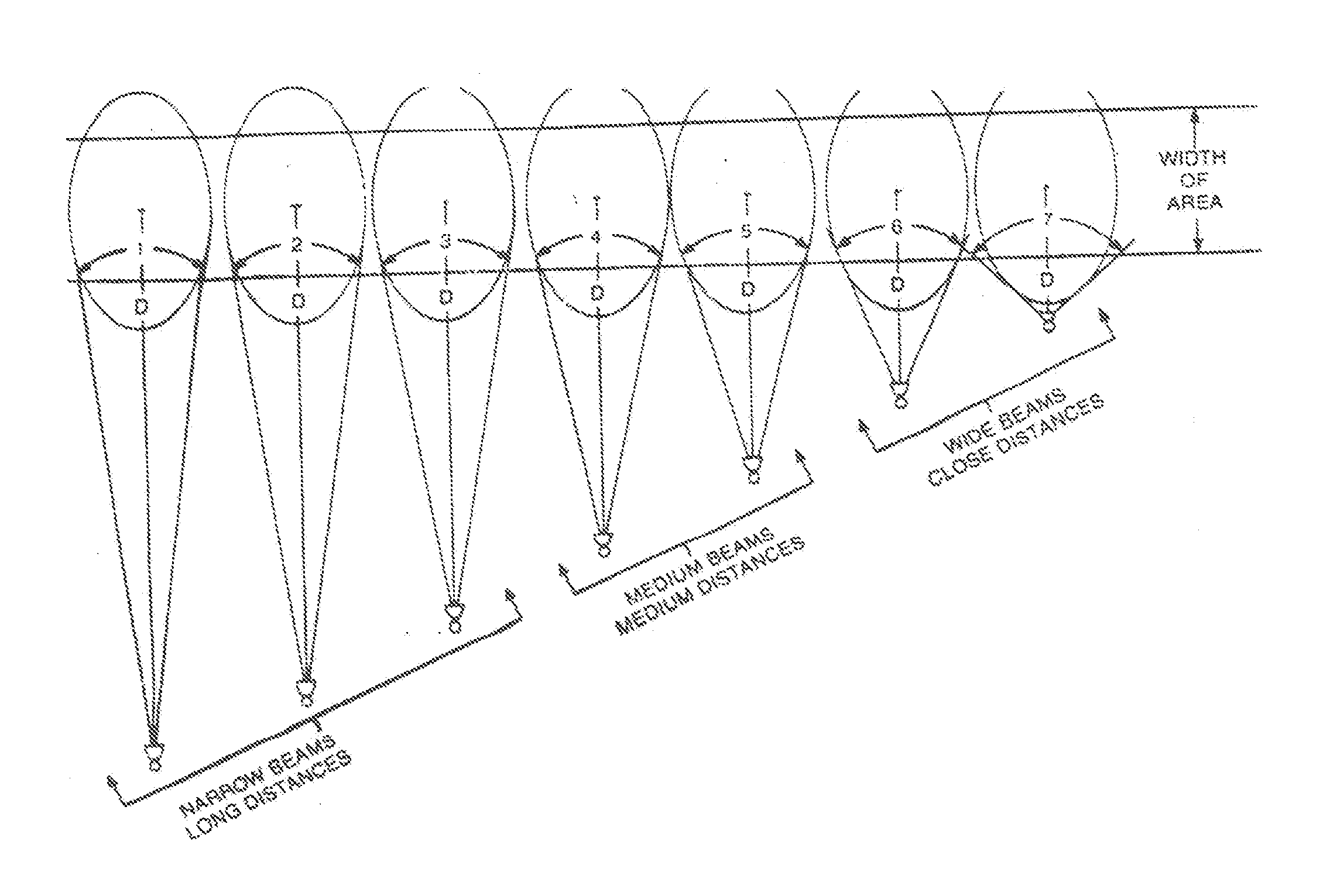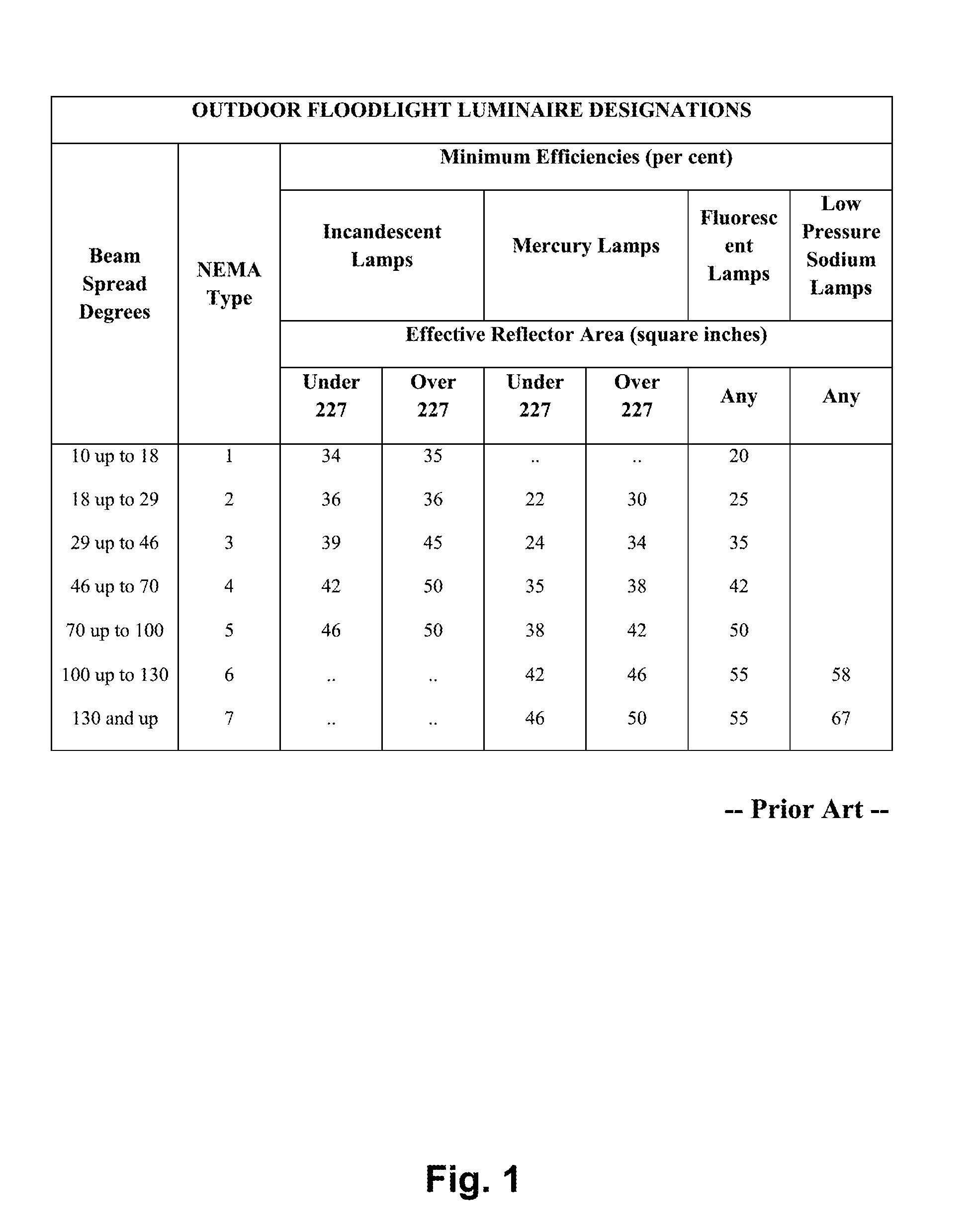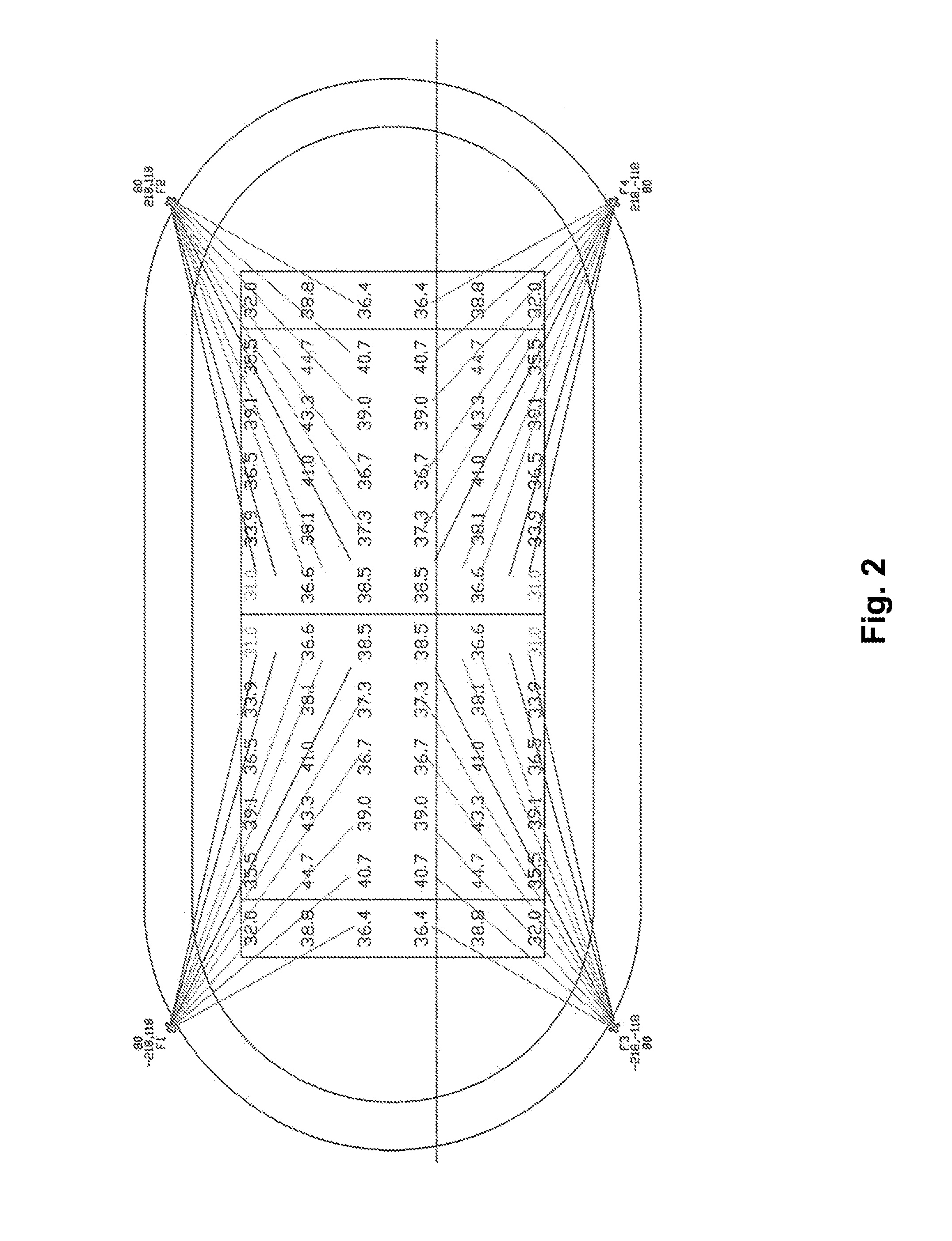Light emitting diode (LED) sports lighting luminaire assembly
- Summary
- Abstract
- Description
- Claims
- Application Information
AI Technical Summary
Benefits of technology
Problems solved by technology
Method used
Image
Examples
Embodiment Construction
[0033]A description of preferred embodiments of the invention follows.
[0034]Description of phenomena related to light can require extensive terminology. Definitions of some of the terms are provided below, prior to the further discussion of the present invention, while some other terms are explained throughout the specification.
[0035]The total amount of light, as perceived by humans is often measured as luminous flux. Luminous Flux is the time rate of flow of light, and the lumen (abbreviated as “lm”) is the standard unit for the luminous flux of a light source. At a more technical level, Luminous Flux is the energy per unit time that is radiated from a source over visible wavelengths as adjusted for human visual sensitivity (approximately 380 to 780 nm). The lumen (abbreviated as “lm”) is the standard unit for the luminous flux of a light source, derived from the SI unit candela, and defined as the luminous flux emitted into unit solid angle by an isotropic point source having lumi...
PUM
 Login to View More
Login to View More Abstract
Description
Claims
Application Information
 Login to View More
Login to View More - R&D
- Intellectual Property
- Life Sciences
- Materials
- Tech Scout
- Unparalleled Data Quality
- Higher Quality Content
- 60% Fewer Hallucinations
Browse by: Latest US Patents, China's latest patents, Technical Efficacy Thesaurus, Application Domain, Technology Topic, Popular Technical Reports.
© 2025 PatSnap. All rights reserved.Legal|Privacy policy|Modern Slavery Act Transparency Statement|Sitemap|About US| Contact US: help@patsnap.com



